Before the time when people began to create
agricultural settlements they were nomads
because they had to follow the dictates of
the seasons, migrating with their prey and the
other food sources as these matured and
became ripe for collecting at different
places.
The reindeer went high up in the
mountains in summer to graze and then
returned to the shelter of the forested
valleys in winter.
The migration went up and then down. The
primary directions were thus up and down.
The same pattern as when life grew and then
declined.
... [This is] Waman Puma's conception of the
relationship between Peru and Spain
according to the Andean duality principle of
Hanan (Upper) and Hurin
(Lower). Each country is shown as a
Tawantinsuyu - four quarters with a
capital in the center.
|
N |
S |
|
 |
 |
|
Quincunx |
Egyptian X |
Peru is higher,
closer to the sun, and therefore full of
gold, the 'sweat of the sun' ...
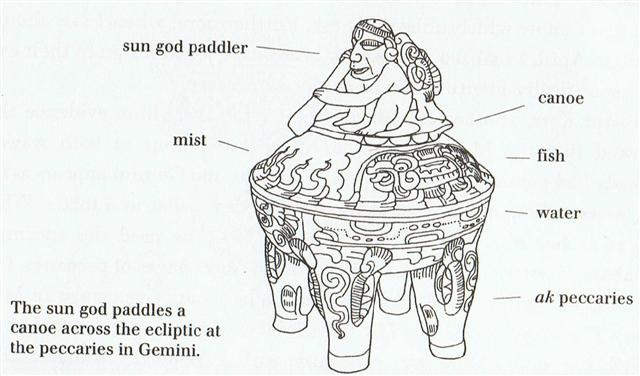
In Polynesia up was nika and down was
raro:
Raro.
Bottom, bottom end, lower part; when
used as a locative adverb, it is preceded by
a preposition: a raro, down (lit.:
along down); ki raro. downwards;
mai raro, upwards (lit.: from down);
o raro, lower (lit.: of down). When used
with a noun the same preposition is
repeated: ki ea-mai mai raro mai te rano,
when coming up from the bottom of the
crater. Hé-ara, he-űi a raro o te vai
kava, concentrating, he looked at the
sea-bottom. I te ahiahi-ata he garo te
raá ki raro ki te vai kava. In the
evening the sun disappears under the sea.
Gutu raro, lower lip. Ana ká i te
umu, he hahei hai rito i raro, when you
cook food (lit.: light the oven) you cover
it all around with banana leaves at the
bottom. Koreha o raro o te oone,
earthworm. Manava topa ki raro,
humble, to humiliate. Te tagata hau-ha'a
i raro, ina ekó ma'u-tako'a i te hauha'a o
te kaiga nei ana mate; bienes terrenales
cuando muere →
a rich man in this world world cannot take
his earthly belongings with him when he
dies. Ariga moe ki raro, to
lie flat on the ground. Hakarere ki raro,
to put down. Ku-toka-ana te vai i raro i
te puna, there is little water left at
the bottom of the lake. Hakatopa ki raro,
to knock down, to subjugate.
Nika.
'Savage tribes knew the Pleiades
familiarly, as well as did the people of
ancient and modern civilization; and Ellis
wrote of the natives of the Society and
Tonga Islands, who called these stars
Matarii, the Little Eyes: The two
seasons of the year were divided by the
Pleiades; the first, Matarii i nia,
the Pleiades Above, commenced when, in the
evening, those stars appeared on the
horizon, and continued while, after sunset,
they were above. The other season,
Matarii i raro, the Pleiades Below,
began when, at sunset, they ceased to be
visible, and continued till, in the evening,
they appeared again above the horizon. Gill
gives a similar story from the Hervey group,
where the Little Eyes are Matariki,
and at one time but a single star, so bright
that their god Tane in envy got hold
of Aumea, our Aldebaran, and,
accompanied by Mere, our Sirius,
chased the offender, who took refuge in a
stream. Mere, however, drained off
the water, and Tane hurled Aumea
at the fugitive, breaking him into the six
pieces that we now see, whence the native
name for the fragments, Tauono, the
Six, quoted by Flammarion as Tau,
both titles singularly like the Latin
Taurus. They were the favorite one of the
various avelas, or guides at sea in
night voyages from one island to another;
and, as opening the year, objects of worship
down to 1857, when Christianity prevailed
throughout these islands.' (Allen)

|
ALCYONE (*56) |
84 |
AL MINHAR AL ASAD (*141) |
10 |
REGULUS (*152) |
|
May 16 (501 = 80 + 56) |
Aug 9 (221 = 80 + *141) |
Aug 20 (232 = 91 + *141) |
|
'April 19 (474 = 136 - 27) |
'July 13 (194 = 221 - 27) |
'July 24 (205 = 232 - 27) |
|
"April 5 (460 = 136 - 41) |
"June 29 (180 = 221 - 41) |
"July 10 (191 = 232 - 41) |
|
MARCH 13 (437 = 136 - 64) |
JUNE 6 (157 = 221 - 64) |
JUNE 6 (157 = 221 - 64) |
|
501 - 141 = 360 = *280 |
221 - 141 = 80 → *0 |
232 - 141 = 91 |
Climbing the 64 hieroglyphic steps in Copán
you would be able to simultaneously follow
the guiding text. This climb ought to allude to
the climbing of the Sun in order to reach his apex at
midsummer.
172 ('June 21) - 64 = 108 ('April
18) → Tau-ono.
| ... It is
known that in the final battle
of the gods, the massed legions
on the side of 'order' are the
dead warriors, the 'Einherier'
who once fell in combat on earth
and who have been transferred by
the Valkyries to reside with
Odin in Valhalla - a theme much
rehearsed in heroic poetry. On
the last day, they issue forth
to battle in martial array. Says
Grimnismal (23): 'Five
hundred gates and forty more -
are in the mighty building of
Walhalla - eight hundred
'Einherier' come out of each one
gate - on the time they go out
on defence against the Wolf.'
That makes 432,000 in all, a
number of significance from of
old. This number must have had a
very ancient meaning, for it is
also the number of syllables in
the Rigveda. But it goes
back to the basic figure 10,800,
the number of stanzas in the
Rigveda (40 syllables to a
stanza) which, together with
108, occurs insistently in
Indian tradition, 10,800 is also
the number which has been given
by Heraclitus for the duration
of the Aiōn, according to
Censorinus (De die natali,
18), whereas Berossos made the
Babylonian Great Year to last
432,000 years. Again, 10,800 is
the number of bricks of the
Indian fire-altar (Agnicayana).32
32
See J. Filliozat, 'L'Indie et
les échanges scientifiques dans
l'antiquité', Cahiers
d'histoire mondiale 1
(1953), pp. 358f.
'To
quibble away such a
coincidence', remarks Schröder,
'or to ascribe it to chance, is
in my opinion to drive
skepticism beyond its limits.'33
33 F. R. Schröder,
Altgermanischer Kulturprobleme
(1929), pp. 80f.
Shall one
add Angkor to the list? It has
five gates, and to each of them
leads a road, bridging over that
water ditch which surrounds the
whole place. Each of these roads
is bordered by a row of huge
stone figures, 108 per avenue,
54 on each side, altogether 540
statues of Deva and Asura, and
each row carries a huge Naga
serpent with nine heads. Only,
they do not 'carry' that
serpent, they are shown to
'pull' it, which indicates that
these 540 statues are churning
the Milky Ocean, represented
(poorly, indeed) by the water
ditch,34 using Mount
Mandara as a churning staff, and
Vasuki, the prince of the Nagas,
as their drilling rope.
34 R. von
Heine-Geldern, 'Weltbild und
Bauform in Südostasien', in
Wiener Beiträge zur Kunst- und
Kulturgeschichte 4 (1910), p.
15.
(Just to
prevent misunderstanding: Vasuki
had been asked before, and had
agreeably consented, and so had
Vishnu's tortoise avatar, who
was going to serve as the fixed
base for that 'incomparably
mighty churn', and even the
Milky Ocean itself had made it
clear that it was willing to be
churned.)
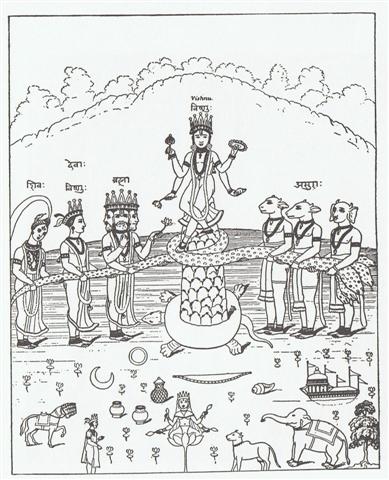
The
'incomparably mighty churn' of
the Sea of Milk, as described in
the Mahabharata and
Ramayana. The heads of the
deities on the right are the
Asura, with unmistakable
'Typhonian' characteristics.
They stand for the same power as
the Titans, the Turanians, and
the people of
Untamo, is short, the 'family'
of the bad uncle, among whom
Seth is the oldest
representative, pitted against
Horus, the avenger of his father
Osiris.
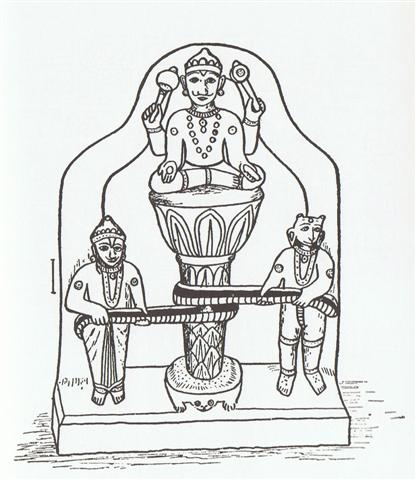
The
simplified version of the
Amritamanthana (or Churning of
the Milky Ocean) still shows
Mount Mandara used as a pivot or
churning stick, resting on the
tortoise. And here, also, the
head on the right has
'Typhonian' features. The whole
of Angkor thus turns out to be a
colossal model set up for
'alternative motion' with true
Hindu fantasy and
incongruousness to counter the
idea of a continuous one-way
Precession from west to east
... |
At the shadowy (cool) side of the Mountain was the
descending of water (serpent):
... Behind me, towering almost 100 feet into
the air, was a perfect ziggurat, the
Temple of Kukulkan. Its four stairways had
91 steps each. Taken together with the top
platform, which counted as a further step,
the total was 365. This gave the number of
complete days in a solar year. In addition,
the geometric design and orientation of the
ancient structure had been calibrated with
Swiss-watch precision to achieve an
objective as dramatic as it was esoteric: on
the spring and autumn equinoxes, regular as
clockwork, triangular patterns of light and
shadow combined to create the illusion of a
giant serpent undulating
on
the northern staircase
...
This visual spectacle was accompanied by a
spectacle for the ears:
... I must here take the
opportunity to document, before it vanishes
from my memory, how scientists (according to
a TV program I happened to stumble on
yesterday) had found out that the 91
vertical stone segments clearly had been
arranged in order to produce a remarkable
acoustical phenomenon - viz. how someone
(like a priest) when clapping his hands
standing on the ground in front of the
pyramid would receive an echo of approval
from the stones, sounding exactly like the
chirp of the Flying Serpent (Kukulkan,
the Quetzal Coatl)
...
... It was 4 August 1968,
and it was the feast day of Saint Dominic,
patron of Santo Domingo Pueblo, southwest of
Santa Fe. At one end of the hot, dusty
plaza, a Dominican priest watched nervously
as several hundred dancers arranged in two
long rows pounded the earth with their
moccasined feet as a mighty, collective
prayer for rain, accompanied by the powerful
baritone singing of a chorus and the beat of
drums. As my family and I viewed this, the
largest and in some ways the most impressive
Native American public ceremony, a tiny
cloud over the Jémez Mountains to the
northwest got larger and larger, eventually
filling up the sky; at last the storm broke,
and the sky was crisscrossed by lightning
and the pueblo resounded with peals of
rolling thunder
...
The quetzal bird had a long flowing tail
which made him look like a colourful serpent
when flying.
.jpg)
In the G text 'April 18 (108) was at helical
Tau-ono in Gb8-22 and this was 64
days before heliacal Drus in Ga2-25
- alluding to the day of creation, at least according
to the Mayas. 225 - 180 = 45 = All Hearts'
Day in February 14 (2-14).
... Once upon a time
there was an old woman who owned a great
potato field where she planted her potatoes
in spring and harvested them in autumn. She
was famous all around for her many varieties
of wonderful potatoes, and she had enough of
them to sell at the market place. She
planted her potatoes 7 in a row, placing her
foot in front of her as a measure from one
potato to the next. Then she marked the
place with a bean - which would also give
nourishment to the surrounding potatoes.
Next she changed variety and planted 7 more
followed by another bean, and this was the
pattern she followed until all her 214
varieties had been put down in their proper
places. She had drawn a map which she
followed and from where each sort of potato
could be located at the proper time for its
harvest. I was fascinated, when I happened
to stumble on this Swedish TV program,
because my 'once upon a time' was now and
214 (= 2 * 107) was surely no coincidence.
She knew what she was doing. Let's therefore
count: 214 * 7 (potatoes) + 213 (beans) =
1711. So what? Probably because 1711 = 59 *
29
...
|
Te Taka-pau |
39 variants of uhi - STOLEN by Teke
from his brother Ma'eha [E:58-64] |
9 |
|
 |
18 |
 |
13 |
 |
7 |
 |
|
Gb6-26 (229 + 179 = 408) |
Gb7-17 (198) |
Gb7-31 (212) |
Gb8-8 (220) |
|
SIRRA H
(*0) |
ADHIL (*19) |
MIRA (*33) |
BHARANI (*41) |
|
ALCHITA (*183) |
SPICA (*202) |
KHAMBALIA (*216) |
ZUBEN ELGENUBI (*224) |
|
0h |
39 (= 3 * 13) |
|
MARCH 8 |
1 |
10 (*354) |
1 |
12 (71) |
13 (72) |
1 |
15 |
1 |
17 |
2 |
MARCH 20 (*364) |
54 |
|
May 11 (131) |
13 |
May 15 (500) |
16 (136) |
18 |
20 |
23 (508) |
|
 |
 |
 |
 |
 |
 |
 |
|
Gb8-18 (230) |
Gb8-20 |
Gb8-22 (463) |
Gb8-23 |
Gb8-25 |
Gb8-27 |
Gb8-30 (1˝ * 314) |
|
496 |
498 |
Tau-ono |
Temennu |
138 |
140 |
HYADUM I (*63) |
|
5 |
5 |
|
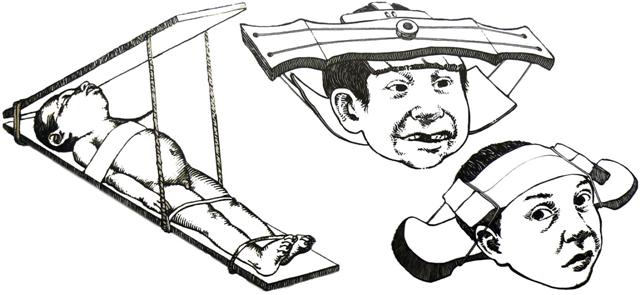 |
|
...
Ecclesiastically, the equinox is
reckoned to be on 21 March (even
though the equinox occurs,
astronomically speaking, on 20
March in most years) ... |
|
... From the
natives of South Island [of New
Zealand] White [John] heard a
quaint myth which concerns the
calendar and its bearing on the
sweet potato crop.
Whare-patari, who is
credited with introducing the
year of twelve months into New
Zealand, had a staff with twelve
notches on it. He went on a
visit to some people called
Rua-roa (Long pit) who were
famous round about for their
extensive knowledge. They
inquired of Whare how
many months the year had
according to his reckoning. He
showed them the staff with its
twelve notches, one for each
month. They replied: 'We are in
error since we have but ten
months. Are we wrong in lifting
our crop of kumara (sweet
potato) in the eighth month?'
Whare-patari answered: 'You
are wrong. Leave them until the
tenth month. Know you not that
there are two odd feathers in a
bird's tail? Likewise there are
two odd months in the year.' The
grateful tribe of Rua-roa
adopted Whare's advice
and found the sweet potato crop
greatly improved as the result
... The Maori further accounted
for the twelve months by calling
attention to the fact that there
are twelve feathers in the tail
of the huia bird and
twelve in the choker or bunch of
white feathers which adorns the
neck of the parson bird
...
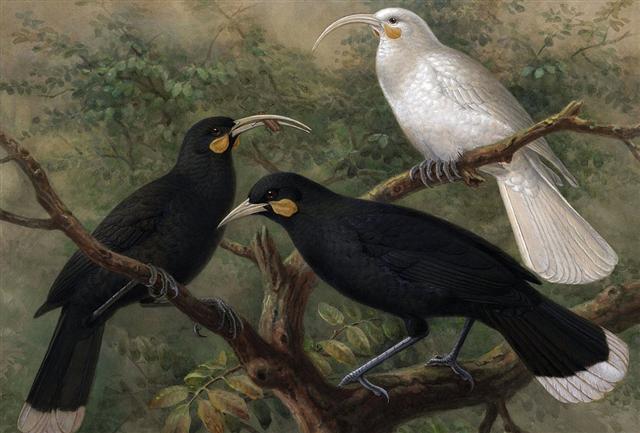
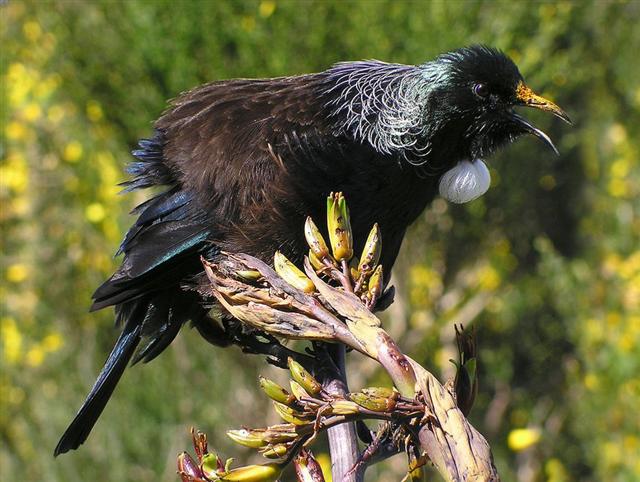 |
|
 |
|
he te verovero |
he ka araara |
he kukuru toua |
he makohe |
he kena |
he tavake |
|
Tou.
In ancient times, a tou
was someone who had
recovered from an epidemic,
but whose illness meant that
someone else in the family
had to die. The tou
were regarded as portents of
evil. Toutou, lush;
fertile (land). Toűa:
Egg yolk; the colour yellow;
soft, fibrous part of tree
bark; toűa mahute,
mahute fibres. Vanaga.
Toua: Wrath, anger,
rage, revenge, battle,
combat, debate, dispute,
dissension, uprising,
revolt, quarrel, fight,
hostility (taua);
toua rae, to provoke,
rae toua, to open
hostilities, toua kakai,
to rebuke, tuki toua,
to stir up dissension;
totoua, hostility;
hakatoua, fighter,
warrior. P Mgv.: toua,
war, battle. Mq.: toua,
war, dispute, quarrel. The
form with o is found
only in these three
languages, taua is
found in the general
migration, Rapanui is the
only speech which has both.
Toutou, fertile (tautau);
hakatoutou, to
fertilize. Mq.: taútaú,
fertile. Toůvae, to
run; hakauruuru
toůvae, id.
Churchill.
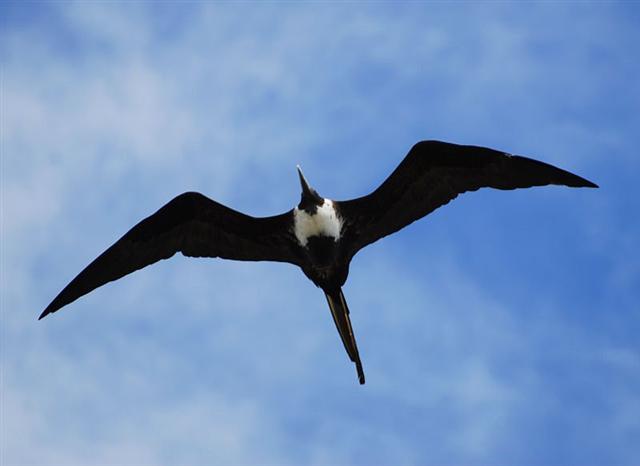

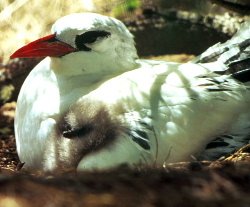 |
|
MAY 14 (79 + 55) |
15 (500) |
16 (136) |
17 |
18
(*58) |
19 |
 |
 |
 |
 |
 |
 |
|
Ga2-24 |
Ga2-25
(55) |
Ga2-26 |
Ga2-27 |
Hanga Te Pau |
Ga2-29 |
|
φ Gemini (118.4)
*77.0 = *118.4 - *41.4 |
DRUS (Hard) = χ Carinae
(119.9) |
ω Cancri (120.2) |
8h (121.7)
χ
Gemini (121.0),
NAOS (Ship) =
ζ
Puppis
(121.3) |
ρ
Puppis (122.0),
HEAP OF FUEL = μ Cancri
(122.1),
ζ
Monocerotis (122.3), ψ
Cancri (122.6),
REGOR (Roger backwards) = γ
Velorum
(122.7) |
TEGMINE = ζ Cancri
(123.3) |
.jpg) |
|
July 17 |
18 |
19 (200) |
20 (*121) |
21 |
22 / 7 → π |
|
°July 13 |
14 |
15 (196) |
16 |
17 (*118) |
18 |
|
'June 20 |
SOLSTICE |
22 (173) |
23 |
ST JOHN'S DAY |
25
(*96) |
|
"June 6 |
7 |
8 (*79) |
9 (160) |
Te Maro 10 |
11 |
|
he ea.a Ira.he iri he oho ki
runga anake. i te angahuru o
te raa o te maro i iri ai
- Ira got up. They all
climbed to the top of the
hill. They climbed up on the
tenth day of the month of
June ('Maro’).
[E:18] |
|
CLOSE TO THE FULL MOON: |
|
NOV 13 |
14 |
15 |
16 (*240) |
17 |
18
(322) |
|
ι Sagittarii (301.2),
TEREBELLUM = ω Sagittarii,
ξ Aquilae (301.3),
ALSHAIN (Falcon) = β Aquilae
(301.6), φ Aquilae (301.8) |
ε Pavonis, θ Sagittarii
(302.3), γ Sagittae (302.5),
μ Pavonis (302.7) |
τ Aquilae
(303.8) |
20h (304.4)
η Sagittae (304.2),
δ Pavonis (304.4)
*263.0 = *304.4 - *41.4 |
SHANG WEI (Higher Guard) = κ
Cephei
(305.2),
θ Sagittae (305.4), TSEEN
FOO (Heavenly Raft) = θ
Aquilae (Ant.)
(305.6), ξ Capricorni
(305.8)
*264.0 = *305.4 - *41.4 |
TSO KE (Left Flag) = ρ
Aquilae
(306.3) |
|
Jan 16 |
17 |
18
(383) |
19 |
20 |
21 |
|
°Jan 12 |
13 (378) |
14 |
15 (*300) |
16 |
17 |
|
'Dec 20 (354) |
SOLSTICE |
22 |
23 |
CHRISTMAS EVE |
25
(*279) |
|
... The evening of 23 June,
St. John's Eve, is the eve
of celebration before the
Feast Day of Saint John the
Baptist. The Gospel of Luke
(Luke 1:36, 56-57) states
that John was born about six
months before Jesus;
therefore, the feast of John
the Baptist was fixed on 24
June, six months before
Christmas Eve ...
 |
|
"Dec 6 (340)
|
7 |
8 |
9 |
10 (*264) |
11 (15
* 23) |
5 days later - at β Cancri - was the
apex of the
'climbing (mounting, spawning,
riding) bird' (manu kake):
Kake. Kakea, to come near, to
embark. P Pau.: kake, to
climb, to ascend. Mgv.: kake,
the arrival of shoals of spawning
fish. Mq.: kake, to climb up
a valley. Ta.: ae, to climb,
to ascend. Churchill. Mgv.: kake,
to strike on an ocean reef. Ta.:
ae, to strand. Churchill. Sa.:
a'e, upward, to go up;
sa'e, to elevate one leg, as in
the act of falling in a club match;
'a'e, to ascend, to rise.
To.: hake, upward, to ascend.
Fu.: ake, up, to ascend;
sake, ro raise the leg at one in
derision or mockery; kake, to
climb, to ascend. Niuē:
hake,
up, going up. Uvea: ake,
up; kake,
to go up. Ma.: ake,
upward; kake,
to climb, to ascend. Mq.:
ake,
on high, upward; kake,
to ascend. Mgv.: ake,
upward. Bukabuka: ake,
up. Ta.: ae,
up, to go up, to ascend, to climb.
Ha.: ae,
to raise, to lift up, to mount.
Fotuna: no-jikijiake,
to lift up; no-tukake,
to stand upright. Nukuoro:
kake,
to go up. Nuguria: kake,
up; hanage,
northwest. Rapanui: kake a,
to go abroad. Vi.: thake,
upward; thaketa,
to dig or lift up. Churchill 2.
|
manu
tara
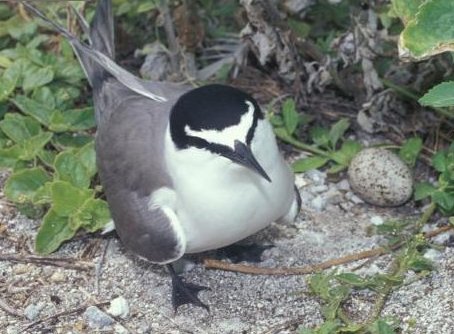 |
|
20 |
*116 (POLLUX)
*117
*118
*119
*120 |
he |
pi
riuriu
kava
eoeo
te
verovero
ka
araara
kukuru
toua |
a Teke.
a Oti. |
|
20 |
|
20 |
|
20 |
|
20 |
|
20 |
*121
(NAOS) |
makohe |
|
20 |
HEAP
OF FUEL
(*41
+ *81)
|
kena |
|
20 |
*123 |
tavake |
|
20 |
*124 (AL
TARF)
*125 |
ruru
taiko |
|
20 |
|
20 |
*126
*127 |
kumara
kiakia |
|
20 |
|
20 |
*128
*129
*130
(BEEHIVE) |
tuvi
tuao
tavi |
|
20 |
|
20 |
|
Manu
tara.
Sooty
tern.
The
names of
the age
levels
of the
sooty
tern
were
earlier
used as
children's
names
(Routledge).
These
names
were
(Barthel):
pi(u)
riuriu,
kava
'eo'eo,
te
verovero,
and
ka
'ara'ara.
Fischer.
Skulls
with
incised
carvings,
imbued
with
power by
Makemake,
were
placed
in the
fowl
house to
promote
the
egg-laying
capacity
of the
occupants.
It may
seem a
long
call
from the
domestic
fowl to
the
sooty
tern,
but both
are
birds
and lay
eggs.
The
sooty
tern (manu
tara)
comes to
breed in
large
numbers
in July
or
August
off the
southwestern
point
formed
by the
crater
of
Rano-kao
on three
rocky
islets,
of which
the only
one
accessible
to
swimmers
is
Motu-nui. (Buck)
 |
|
he ruru
- he
taiko |
|
MAY 20
(280 /
2) |
21 (141) |
 |
 |
|
Ga3-1 |
Ga3-2
(61) |
|
AL TARF
(The
End) = β
Cancri
(124.3)
RAS
ALGETHI
(α
Herculis) |
χ
Cancri
(125.2),
BRIGHT
FIRE = λ
Cancri
(125.4)
*84.0 =
*125.4 -
*41.4 |
 |
|
July 23
(408 /
2) |
24 (205) |
|
°July 19
(400 / 2) |
20 (201) |
|
'June 26
(354 /
2) |
27 (178) |
|
"June 12
(326 /
2) |
13 (164) |
|
CLOSE TO
THE FULL
MOON: |
|
NOV
19
(*243) |
20 (324
= 141 +
183) |
|
GREDI
(Goat) =
α
Capricorni
(307.2),
σ
Capricorni
(307.5),
ALSHAT
(The
Sheep)
=
ν
Capricorni
(307.9) |
Al Sa’d
al
Dhabih-20
(Lucky
One of
the
Slaughterers)
/
Ox /
Herd
Boy-9
(Buffalo)
DABIH =
β
Capricorni
(308.0),
κ
Sagittarii
(308.1),
SADIR
(Hen's
Breast)
= γ
Cygni
(308.4),
PEACOCK
= α
Pavonis
(308.7)
*267.0 =
*308.4 -
*41.4 |
|
Jan
22 (387
= 204 +
183) |
23 |
|
°Jan
18 (384) |
19 |
|
'Dec
26 (360) |
27 |
|
"Dec
12 (346
= 163 +
183) |
LUCIA |
 |
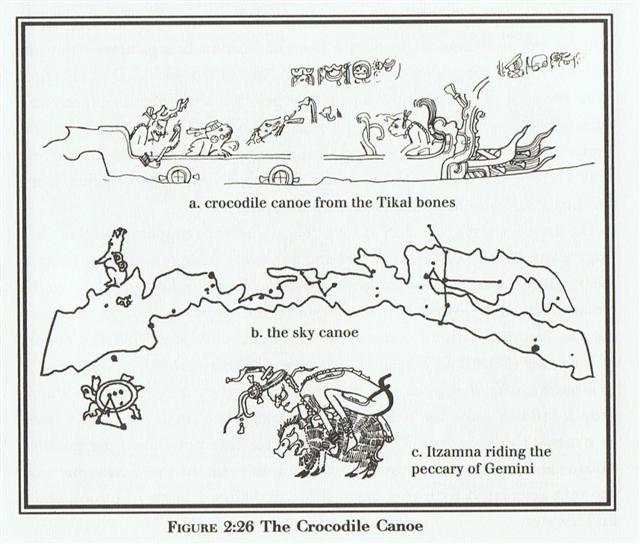
|





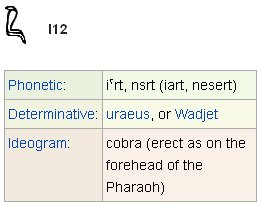



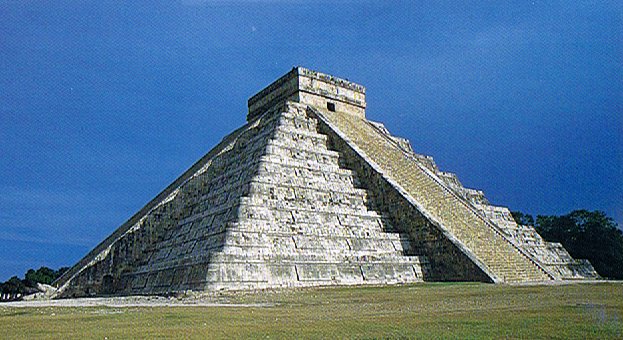
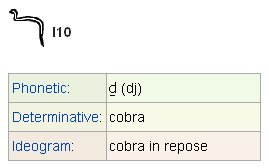
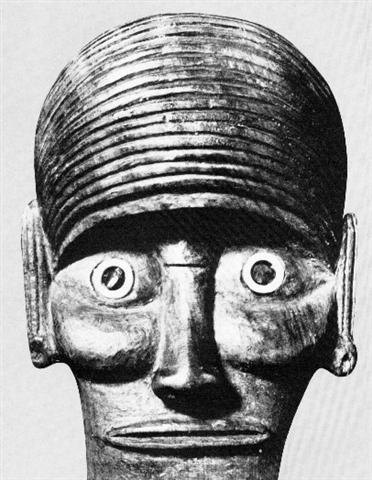
.jpg)











.jpg)







